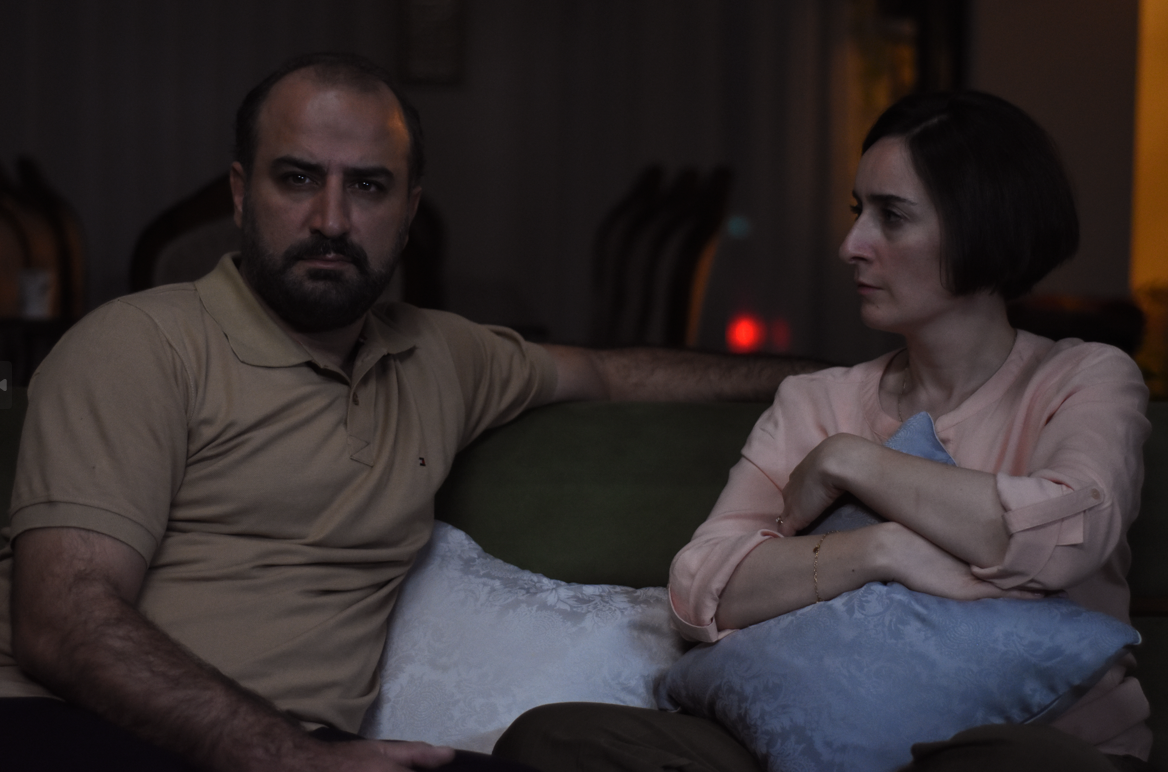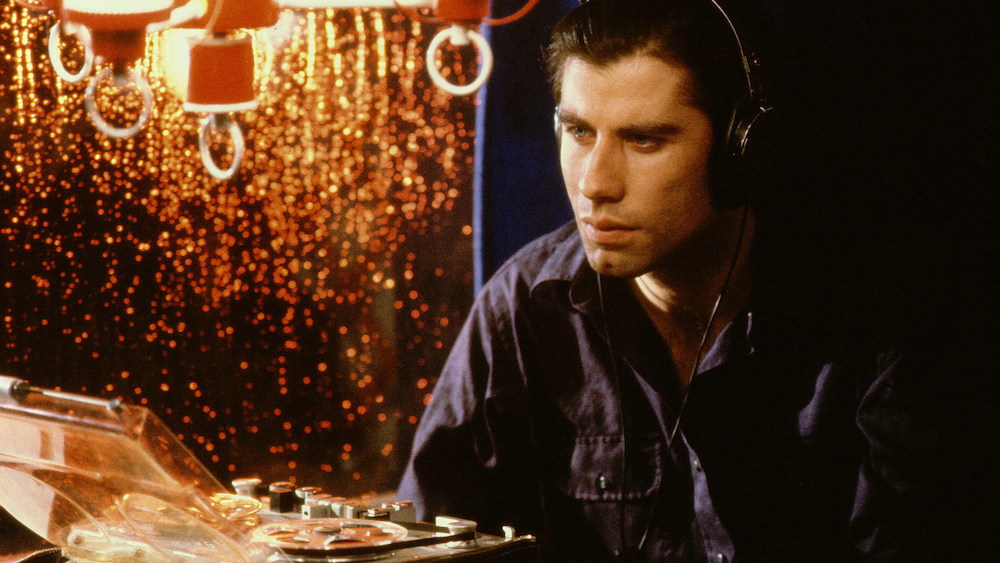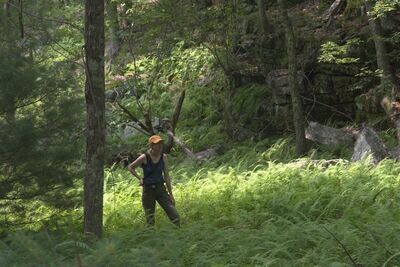

In India Donaldson’s riveting “Good One,” a father-daughter hiking trip takes an uncomfortable turn after the shifting power dynamics of their relationship are gradually brought to the fore, first testing their bond then exposing its limits.
For 17-year-old Sam (Lily Collias), embarking on a three-day backpacking trip in the Catskills with her middle-aged father, Chris (James Le Gros), is a time-honored tradition, less a rite of passage than a familiar ritual, albeit one that will fade into memory after she heads off to college in a few short weeks. Their latest excursion, though, has been slightly overshadowed by the presence of his recently divorced best friend, Matt (Danny McCarthy), who’s unprepared for the weekend in more ways than one.
After Matt’s son refuses at the last minute to join them on the trip, Sam finds herself alone with the two old friends. Though they all get along well enough, the men’s constant bickering and shows of one-upmanship put Sam in an awkward position; patiently listening as they air petty grievances and wallow in self-pity, she’s caught between mediating disputes and calling them out for the selfish, sexist attitudes they display toward the women in their lives — including Sam. Depressingly oblivious and ordinary though this behavior may be, Sam is nevertheless forced to shoulder the weight of it, until lines are crossed and her trust is betrayed.
Revelatory in its intimate, richly layered exploration of the flickering tensions between fathers and daughters, friends and family, and men and women, “Good One” poignantly, painfully distills that universal moment at which we learn to see our parents more honestly. Just as confidently, it charts a woman’s struggle to reconcile her increasingly sure sense of self with the expectations, presumptions, and violations thrust upon her.
For writer-director Donaldson and lead actor Collias, making their striking feature debut was an opportunity to dramatize what often goes unspoken about this time in every young woman’s life. Filming in upstate New York, “Good One” also gave them the chance to capture in naturalistic detail the experience of hiking in the woods: carrying everything on your back so as to leave no trace, reaping the rewards of thinking ahead, and finding oneself both isolated and empowered within nature.
“Good One” opens theatrically on August 9, expanding wider in subsequent weeks; it reaches Chicago on August 23, playing at the Gene Siskel Film Center. Marking the first feature to be distributed by Metrograph Pictures, the New York City theater’s newly formed distribution label headed by longtime A24 executive David Laub, “Good One” has been a standout of this year’s film festival circuit; it’s the only feature this year to play at both Sundance, where it premiered, and Cannes, where it screened in the Directors’ Fortnight section.
In between the two, “Good One” was an official selection of this year’s Chicago Critics Film Festival; while in Chicago this past May for a screening and post-film Q&A, Donaldson sat down with RogerEbert.com to discuss walking miles in someone else’s shoes, control and surrender on set, the “sense of permission” she felt seeing “35 Shots of Rum,” and much more.
This interview has been edited and condensed.
You wrote the first draft of “Good One” before you had a child, then you filmed it as a new mother. Especially given that you grew up taking hiking trips with your father, and that those experiences directly inspired this story, how did becoming a parent yourself further inform your perspective on the film you were making?
Being a parent informed every aspect of making this movie, in ways that I think I’ll still be learning about for years to come. That experience first came in when my son was about four months old, and I had written a draft of this script already; I revisited it with a new, extreme sense of urgency around making a film.
I’d had this idea in my head, for years, that I needed to make a feature film before having a child. I couldn’t reconcile how I could parent a young child and make a first film, given all of the challenges of making your first film with limited resources. I couldn’t reconcile how that would be possible. Then, the pandemic happened. It suddenly felt like making an independent film was even further away. I was getting close with a different film, and then it didn’t come together, the pandemic happened, I had a child, and everything seemed paused. I was going to move on with other things that I wanted with my life.
When he was about four months old, I came out of that sleepless stupor and felt that I needed to make a movie, so I reread the script and remember having a newfound sense of empathy for the two dads. I did a pass on the script, very much informed by that. I realized I had a lot of affection for these characters; so much of the writing process, for me, was about finding who they were and bringing out what I loved about them, because I know that these two men disappoint Sam, the protagonist, and disappoint the audience, but I wanted to them to be fully fleshed-out human beings. Disappointment is more deeply felt when you have higher expectations for the person. If they seem like dirtbags the whole time, it feels expected, and you care less. I really wanted to show how people that you love can let you down.
In making and discovering the film along the way, through the process of shooting it and editing it, then putting it out into the world and getting feedback on it, it’s been a process of letting go of control. I can’t control how the film makes people feel. I can’t control how other people do their jobs. All I can do is bring on the collaborators that I trust and feel excited about working with, to trust them to do what they do best. I keep thinking about all the parallels with parenting there. You can help a thing exist in the world, but you can’t control the life that it has. There’s a lot of symmetry with filmmaking there for me, at this particular juncture, at this point in my life.
There’s a surrender there. That process of letting go is emancipatory for Sam, as she realizes she’ll have to protect her own autonomy, to escape the control of the two men she’s hiking with. Filming in the wilderness of upstate New York for 10 of the 12 days you shot, you can’t control the available light, weather conditions, and so many factors. On set, I’m curious whether you felt a similar push-and-pull between control and surrender, and what it was like to gauge that in an instantaneous way while filming.
I probably was not articulating this approach leading up to it, but I can reflect on it now: what I could control was all the preparation that I put into it. I could devote all the attention in the world to the script. I could spend time bringing on the right collaborators, I could scout the location multiple times. Wilson Cameron, who shot the film, and I had made three short films together, and our joke is that the way that we shot a movie in 12 days was that we’d had eight years of prep. I live in Los Angeles now but, when I lived in New York, we would go on long walks and talk about making movies. All of that was an investment in the film that we made. Wilson and I have a near-wordless way of communicating, and I feel that I developed my visual language and collaboration with him in many ways. All of that was the part that I can control, all the preparation that went into it.
The way we designed the shoot, and the fact that I wrote a film that takes place mostly outdoors, made it easier to shoot a film quickly and nimbly, with a small crew. You can move quickly; you’re not spending a lot of time with lighting setups. You find the frame, and you find the light, with what’s available. Then, of course, you’re constantly having to adapt and think on your feet, because of thunderstorms or forest fires that come through and cause you to lose half a day, which happened. That took out a huge percentage of our schedule, so we were asking, “Okay, what can we cut from the script or do more quickly?”
But incredible, beautiful things came out of it, too: all the bugs that appear in the film. Even the rain gave one of the campsite scenes this slightly muddy, dark, wet feeling that totally adds to the mood of it. You can’t control those things. We had butterflies that were attracted to those rock towers. All of those spontaneous things that you have to harness in the moment are what makes the film 100% specific to the exact moment in which we made it. If we had shot the film two weeks after, it would have been a different film. The environment became this wild-card collaborator in a way that forced us to make choices that I couldn’t have anticipated, but that I think made the film better in the end.
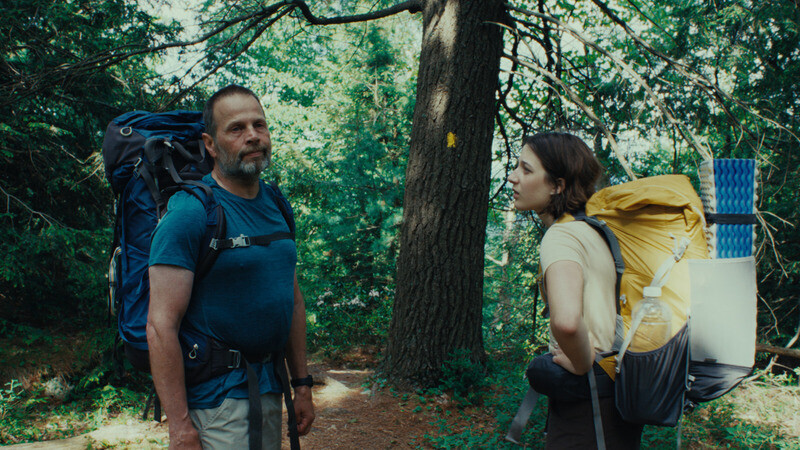
For the actors, as well, I’m sure it was instructive to be in nature and to understand their own responsibility to take care of themselves in that setting. You can’t stop anyone from twisting an ankle and getting bitten by ticks.
I wish I could have protected the whole crew. I think I was the only one that actually found a tick that broke skin on my body, but we saw a lot of them. I was very worried about everybody else’s comfort. [laughs]
Taking camping trips with friends or family, you’re outdoors but also in close proximity to the same people for days on end. “Good One” beautifully captures what I’ve heard you call a counterintuitive claustrophobia. Thinking about the moment of silence Sam finds on the mountain, I was reminded of all those hiking trips I’ve been on with people who won’t stop talking or playing music. I don’t want to hear a drum solo in the middle of the forest.
Oh, totally. It’s real. [laughs] It’s meaningful to me when people like yourself, who spend a lot of time outdoors, feel that this film resonates with your experience, because I feel like in making a movie, you’re faking a lot. You’re crafting a sense that they’re going on this journey. I just love all the business of hiking, backpacking, and camping, the chore of it. There are so many sensory details I wish I could have crammed into the movie, that didn’t even make it into the movie, like that feeling of how amazing a seat feels when you’ve been walking all day.
I got that from Lily Collias, though, in that one shot where she’s leaning so far back in her camp chair.
[laughs] True, there’s that one shot. Those camping chairs drove the actors crazy. They were falling back in them, having to sit for way longer than anyone should ever sit in one of those chairs. All those details are the contents of the story, because that’s the joy of it. The amount of care you put into preparing a simple meal, because food tastes so f—ing good when you’ve been hiking all day, and nothing else is going on, so you’re paying attention to the process of it in a way that you don’t do in your everyday life. Out there, you can focus.
“Good One,” through those details, also illuminates the power dynamics between these characters. Sam does most of the cooking; she puts the fire out at night. She exercises control over that space in a way no one back home would know how to navigate. Yet, her capability creates friction with her father, who insists he knows what to do, at the expense of accepting she also knows.
It’s funny. In those relationships, and this is certainly true in the film, we inherit these things from our parents, but they are always going to be the expert. Even though Sam has been trained to be as capable as her dad, because he made her that way—and she genuinely shares a love for these things, because of him; it’s her way of connecting with him—she’ll never in his eyes be the expert. But he’s the one who trained her in the art of taking care of yourself on the trail.
What balance did you strike in the writing process between capturing precise nuances of dialogue and imagery and staying open to what you knew you’d discover during filming?
I write stories for myself to make, and I write in a way that feels interesting and honest to me, without feeling the structural pressures of whether it will be understood in a market sense. I always love triangles, narratively; it always creates a narrative tension to see relationships ping against a third party and bounce back, forming new dynamics.
A movie that rocked me when I first saw it in high school is “Days of Heaven.” What’s relevant there is the way that film takes an empathetic lens toward the Sam Shepard character. This third party who has it all, while they have nothing, suddenly becomes this full human being that you empathize with, and you feel for, as much as you feel for the other two characters. I’m drawn to triangles of people, so I approached this with a very clear understanding of who these three characters were. They go on this trip; the other son was supposed to come, and he drops out. From the beginning, that shifts her expectation; she realizes that the trip she thought she was on is suddenly very different. She has no agency. There’s no choice for her. She’s on this new ride.
I wrote it intuitively and followed my instinct about where it might go. That draft was probably much looser and more rambling than the film, but I went back and excavated the story from there: what emotional journey are these two guys going on, and what’s her role in that? From the first draft, I had the foundation of what I wanted to do structurally, which was to put what you might typically call an inciting incident two-thirds of the way into the movie, at the end of a really long, 13-minute scene. I wanted the audience to have the opportunity to get to know this guy, all the different shades of who he is and what he’s going through, and for that to reveal itself slowly over the course of the film.
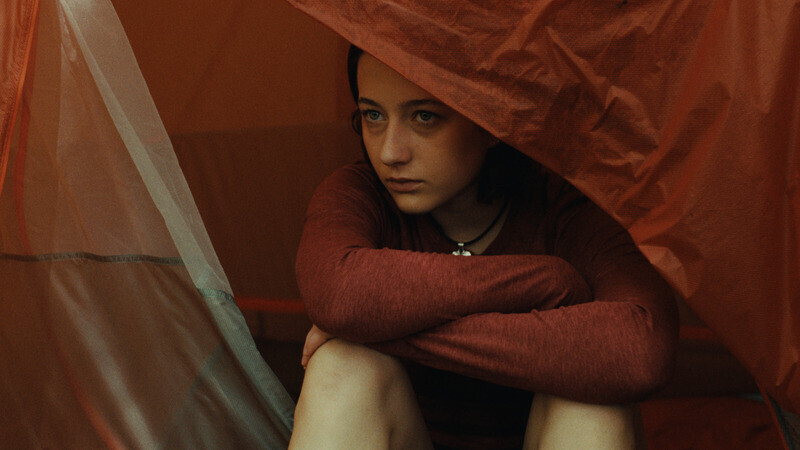
In the scene you’re referring to, during an exchange between Sam and Matt, he crosses a line; the resulting tension not only lingers the next day but leads Sam to see the dynamic differently. What makes it so uncomfortable, in part, is that it feels like Matt—clumsily, disastrously—is reacting to how emotionally perceptive Sam has been in listening to him vent.
What I was drawing on from my own youth, which might be a little bit overshadowed by what happens in that scene, was this feeling that I remember feeling many times as a teenage girl, where you desperately want the respect of adult men. You want to be taken seriously, and there are micro-moments where you think that somebody’s interested in what you’re saying, taking you seriously, or treating you like a peer, and then there’s some small action or statement made where you realize, “Oh, that was not what was happening.” That realization comes when you’re 16 or 17, and into your early twenties, where you’re learning that the way you want to be seen is not always going to be how you’re seen. You can’t control that. You can’t control what other people need from you.
Though you map the relationships between these characters, “Good One” is grounded so strongly in Sam’s perspective. How did you go about capturing that point of view?
The idea I had going into the shoot, which I anchored our shooting style to, was that her experience of everything—even if it was a conversation between the two guys that had nothing to do with her, that was of no interest to her—was always most important. Oftentimes, she’s just a witness to what’s going on between them. She’s a listener and observer. And so, for me, while the natural instinct is to put the camera on the person who’s speaking, or the conversation that’s happening on the page, we needed to stay with Sam.
There’s a moment in the film where she’s filtering water, and they’re on either side of her having this competitive banter, and it’s for the most part grounded in what she’s doing and her listening. She says nothing in the scene, but that exemplifies the visual language of the film. What’s going on for her at that moment? I always made sure that we had coverage of her for an entire take, even if she says next to nothing. We put the most time into getting her non-verbal or sparsely worded performance.
Also, I was framing and blocking for power dynamics. I didn’t want the entire film to be so tight on her, because I also wanted to create a sense of connection with these two guys, so the audience isn’t overly alienated from them. In wider shots in the film, the way they’re situated might say something about the dynamic at play; they’re walking up a hill, and Chris is first, Sam is in the middle, and Matt is trailing behind, so she stops to wait for him, showing how the dynamics are getting spun out over many miles and many hours.
Earlier, you mentioned not focusing on narrative structure as you approached the script for “Good One,” writing more freely and intuitively. You were an English major in college. Did that grounding in structure allow you to move away from it later?
I’ve always loved reading and writing analytically. I’ve approached my love of film in that way, too. And I grew up around film; my dad, [“Dante’s Peak” director Roger Donaldson,] was a filmmaker. Perhaps partly because of that, I avoided film for a long time. I had a different career. I had to find the filmmakers, many of them women, who really cut deep for me, and I was still discovering in my early twenties that cinematic language could feel both intuitive and looser, while also being incredibly precise and emotionally structured.
I can’t remember how old I was when I saw my first Joanna Hogg movie, “Exhibition,” but I then went and watched everything she had made up to that point; this was before “The Souvenir,” but I saw “Unrelated” and “Archipelago.” Those films felt so tight and precise while not following any of the rules of cinematic storytelling that I had assumed were necessary. I remember writing a fan letter to her; I never sent it, but it was this pure expression of what I’d felt after seeing her work. I had moments like this with other films and filmmakers. When I saw Kelly Reichardt’s “Old Joy,” I had a similar feeling. Donna Deitch’s “Desert Hearts,” I have a profound relationship with that film, Claire Denis’ “35 Shots of Rum,” as well. I felt a sense of permission to do things in a different way.
I have an issue with critics overusing the term “minimalism,” including in reference to your film and the filmmakers you just mentioned, because it does often minimize what can be achieved through precise detail.
Oftentimes, films that are sparsely plotted are called minimal or are put under the banner of minimalism, but I think, in many cases, what happens emotionally or interpersonally between people can feel very minimal and sparse, but is actually quite dense and rich. I think something can be minimal, structurally or visually, in an outward way, but emotionally maximalist, complex, and meaningful.
The film closes with Connie Converse’s “Talkin’ Like You (Two Tall Mountains),” such a beautiful and haunting song even for those unfamiliar with the mystery surrounding her life, music, and disappearance. What does that song signify to you?
Taylor Rowley, our wonderful music supervisor, had that song on a list of ideas for the end. I’d read an article about her, knew the broad strokes of the story, and loved that album. Listening to Taylor’s playlist, the first lyrics of the song (“In between/two tall mountains”) were perfect, and it all clicked into place. There’s much symmetry, with this film and this artist, with this idea that life can become too much, and sometimes you just need to eject yourself from it. Obviously, there’s so much unknown about Connie Converse and what happened, but there’s also an incredible sadness in needing to disappear. You can infer so much, and I won’t do that. I’ll let the mystery remain.
But when I discovered that Sam needed to leave, in the story, I realized that she’d tried words. She’d tried talking to her dad. It doesn’t work. She doesn’t get what she needs. And there’s a symmetry with this story that the guys tell around the campfire, about a camping trip they went on in their youth, with a woman they’re making fun of, who just left. I wrote that bit of dialogue, probably in the first draft, and then didn’t even realize that it connects with Sam’s arc until later. Sometimes, themes just emerge; as people, we have our interests, and our themes that we’re drawn to, and you’re magnetically drawn to these ideas without knowing how they’re going to pop up.
“Good One” opens in New York August 9 at Metrograph and Film at Lincoln Center before expanding throughout August; it opens at Chicago’s Gene Siskel Film Center on August 23.


